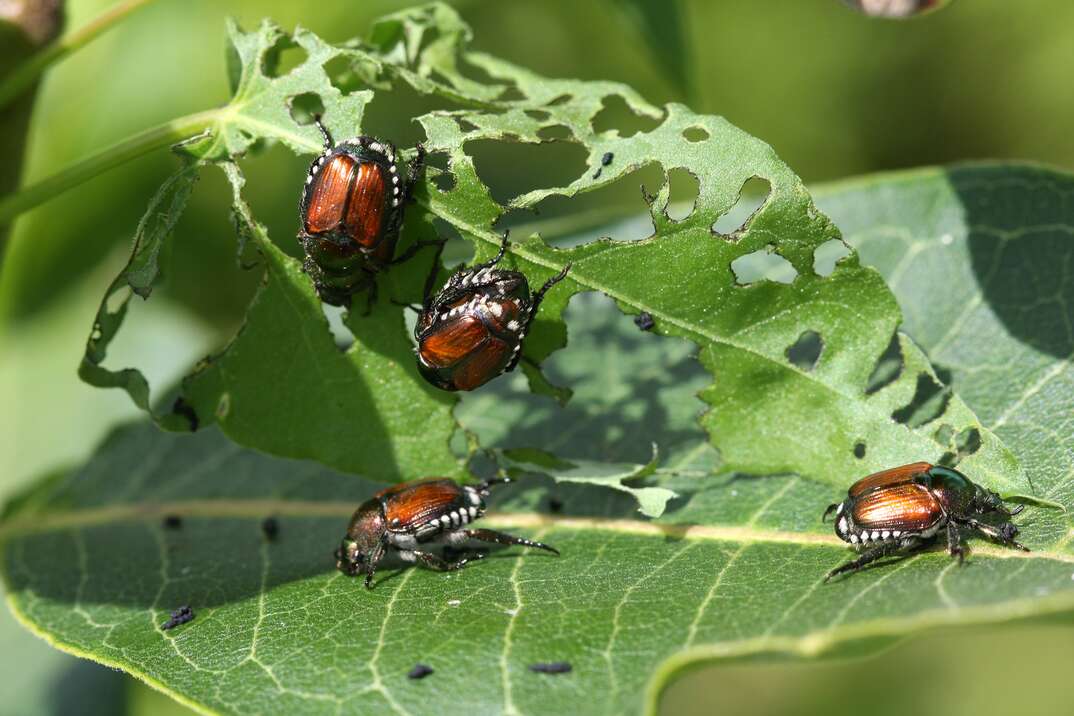What to Know About Invasive Pests

If you've ever ventured out to your backyard to do some gardening and found your prized plants or vegetables ravaged and unrecognizable, there's a good chance invasive pests are to blame. Unlike common house pests like ants or spiders, invasive species literally "invade" trees and plant life, causing serious (and sometimes irreversible) damage.
Read More Pest Control Articles
In most cases, invasive pests aren't directly harmful to humans, but the destruction they leave behind can be emotionally draining and financially taxing. Learning how to keep these frustrating pests at bay can help prevent future occurrences and give you peace of mind in knowing your garden is safe and thriving.
What Is an Invasive Species?
In the world of pests, invasive species are defined as non-native insects that are introduced into new areas foreign to their natural habitats. When these insects arrive in their new destinations where their natural enemies aren't present, they can multiply rapidly, often leading to severe destruction of plant life.
Japanese beetles, emerald ash borers, and spongy moths are some of the most common invasive pests found in the United States. Some identifying traits include:
- Japanese beetles: Native to northern Japan, these beetles have copper-colored wings and distinct metallic green heads. When flying, they make a loud buzzing sound.
- Emerald ash borers: Emerald ash borers were first discovered in the United States in 2002. Native to Asia and Russia, these insects often go undetected due to their tiny size and metallic green color that can easily blend in with nature.
- Spongy moths: Male spongy moths are brown with black markings, while females are white with brown markings. Both have approximately 1-inch wingspans, and the males are often seen flying during late summer and early fall. Their neutral coloring allows spongy moths to blend in with trees and leaves, and they often go unnoticed when they're not flying.
What Are the Dangers of Invasive Pests?
Invasive pests such as Japanese beetles, emerald ash borers, and spongy moths are known to wreak havoc on trees, plants, gardens, and crops. This can result in major economic losses for farmers and cause serious frustration for home gardeners.
Japanese beetles are considered harmless to humans when it comes to bites or stings, but these pesky critters are extremely destructive to grass and plant life. The larvae feed on grass roots, while mature beetles feed on and destroy vegetable gardens, flowers and live plants.
Emerald ash borers feed on ash tree bark, leading to moisture loss for the entire tree. Over time, a lack of moisture from the roots to the leaves can result in tree death. Statistics say emerald ash borers have killed over 100 million trees in the United States, but the insects don't pose a direct threat to humans.
Spongy moths are attracted to over 300 tree and shrub species. Their feasting habits are so aggressive that they can actually cause defoliation, making trees and shrubs vulnerable to disease. When spongy moth caterpillars shed their skins, airborne skin bristles can irritate human skin, eyes, and respiratory systems.
More Related Articles:
- What to Look For When Hiring an Exterminator
- Are Pest Control Products Dangerous For Kids and Pets?
- What Are Ultrasonic Pest Repellers?
- 10 Ways to Prevent Termites
- How to Spray for Mosquitoes
How Do You Prevent the Spread of Invasive Pests?
Methods used to prevent the spread of invasive pests can vary depending on the specific species and extent of the infestation. Here's a breakdown of some common invasive pest species and the methods used to prevent and control their presence:
- Japanese beetles: Controlling Japanese beetle grubs is one of the most effective ways to prevent infestation, as these practices stop the beetles in their tracks before they mature. Some methods used to control grubs include minimal lawn watering during egg-laying season (usually June through August) and installing row covers to stop the beetles from feeding on plants.
- Emerald ash borers: Experts recommend treating ash trees with insecticide every 2 to 3 years to prevent emerald ash borer infestations. It's also important to avoid transporting firewood from known infested areas into non-infested areas. For example, people may unintentionally transport firewood from a campsite with infested ash trees to their homes in non-infested areas.
- Spongy moths: Sticky barrier bands are an effective solution for controlling and preventing spongy moth infestations. Barrier bands consist of burlap and a sticky adhesive. Wrapping the bands around lower tree trunks can help trap the spongy moth larvae and prevent tree invasions.
Elocal Editorial Content is for educational and entertainment purposes only. Editorial Content should not be used as a substitute for advice from a licensed professional in your state reviewing your issue. Systems, equipment, issues and circumstances vary. Follow the manufacturer's safety precautions. The opinions, beliefs and viewpoints expressed by the eLocal Editorial Team and other third-party content providers do not necessarily reflect the opinions, beliefs and viewpoints of eLocal or its affiliate companies. Use of the Blog is subject to the
Website Terms and Conditions.The eLocal Editorial Team operates independently of eLocal USA's marketing and sales decisions.



